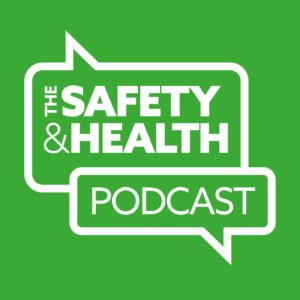In episode 13 of the Safety & Health Podcast, we drop in to a recent FIREX webinar, which looked at the legislative and systemic changes required in fire safety, and the wider building sector, to ensure buildings are made safer for occupants.
 With thanks to our colleagues at IFSEC Global and FIREX, the episode focuses on building safety legislation, including the Building Safety Bill, Fire Safety Act, and proposed changes to the Fire Safety Order.
With thanks to our colleagues at IFSEC Global and FIREX, the episode focuses on building safety legislation, including the Building Safety Bill, Fire Safety Act, and proposed changes to the Fire Safety Order.
IFSEC Global Editor James Moore moderates the session, which includes an audience Q&A, and asks are the proposals enough, and how does the building safety sector work to encourage a wide adoption of a new safety-conscious culture in construction and building safety – from planning through to occupation?
Joining James on the panel was:
- Dennis Davis, Executive Officer, Fire Sector Federation
- Niall Rowan, Technical & Regulatory Affairs Officer, Association of Specialist Fire Protection (ASFP)
- Jonathan O’Neill OBE, Managing Director, Fire Protection Association (FPA)
- Will Lloyd, Technical Manager, FIA Fire Industry Association
Scroll to the bottom of the page to listen to the episode in full.
Fire safety challenges
The discussion begins with the panel talking through the key challenge in improving fire safety in buildings at the moment. Will Lloyd feels that it’s all about making sure that we’re actually doing things correctly. “Half of it is competence, but the other half is the quality check. I don’t think the quality of buildings is there, or has been there. If we build buildings safely and build them the right way, and the way that they’re supposed to be designed, then I think the buildings will be safe.”
Niall Rowan added: “One of the first things we feel, certainly from a passive perspective, is a lack of knowledge of products and systems and how they interact on buildings. There’s a widespread lack of understanding of fire tests and certification. That leads to poor design, because designers are not experts in passive fire protection.”
Lack of awareness
Dennis Davis also feels there is a lack of awareness. He said: “We need to increase awareness about what fire safety is all about. Awareness, which is knowledge base quite often, in all sorts of groups, and I include the construction sector and government in that. Plus, there has been a lack of investment in actually ensuring Building Standards, controls, mechanisms are robust enough, and up-to-date enough to manage the situation that is developing.”
“The second point is about minding the gap. There are tremendous gaps between actions and knowledge and investment in fire. If you look at what we’re doing now, it’s focused on high rise buildings. The danger is, that you miss a lot of what else is going on, like industrialised buildings, and all the processes that are going on there.
“I think we’ve got to be very careful that we don’t take our eye off all of fire safety, whilst we’re looking at one particular major issue or catastrophe. We also need to be a lot better joined up. There’s a very simple example in government, in that one department looks after how we build buildings, and another department looks after how we live and work in buildings. Those gaps are profound and need to be closed and need to be worked on constantly.”
Better understanding
Jonathan O’Neill suggests that a better understanding of the performance of modern buildings in fire scenarios, is required. “We’re seeing, the greater use of combustible materials in the building process, we’re seeing inadequate fire stopping voids, and we’re seeing a lack of experience and competence on site.
“My real worry is that, as we see greater pressure on environmental concerns, we’re not thinking about the whole life of the building. We’re thinking about short term gains, and we’re going to see even greater use of combustible materials and still no understanding about how these materials perform in fire.
“Quite often, we’re importing these new modern building styles, but we’re not importing the protection methods that go along with them, whether that be fire stopping, or fire suppression, and we’ve got a fire and rescue service that are having to deal with real situations and quite often it’s the first time that they will ever come across this type of structure on fire, and it’s almost impossible for them.”
Safety & Health Podcast
Subscribe and tune in the Safety & Health Podcast to discover the latest issues facing the health and safety profession, and stay on-top of the developments affecting your role, from working at height, lone working and common workplace hazards, to safety culture, behaviours, occupational health and mental health and wellbeing.
Last time out, we heard from former 10 Downing Street Director of Communications, Alastair Campbell, about the stigma around mental health in the workplace and tips for employers and those suffering with mental ill health. Also, we have a candid interview about suffering from burnout.
For more content on a similar theme, listen to Gill Kernick, a former Grenfell Tower resident, talk about the pressing need to improve building safety culture post-Grenfell.




